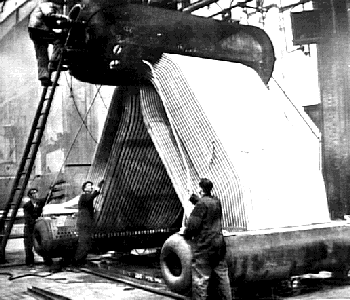Boilers

Early boilers and engines had to change about 30 pounds of water to steam every hour to supply one horsepower.
Modern types do better, altough efficiency varies widely according to type.
Fuel consumption can be reduced by preheating water, and air for the fire, with heat from exhaust steam.
Considerable advantage is obtained from superheat. Since increased temperature is needed to produce steam when the overlying pressure is high, early boilers could barely keep high-pressure steam saturated, that is, free from condensed water vapor, as it expanded and cooled while working trought the engine. By passing steam trought tubes surrounded by fire, it can be superheated several hundred degrees. Then its expansion while working the engine will not cause condensation ad loss of power.
Since most water contains minerals which form scale in or around boiler tubes, a water purifier may be needed.
A boiler also needs an "injector" of some kind to force water in against back pressure from steam.
Finally every boiler need a "water gauge", to warn when water falls below a safe level, and a "safety valve". This usually has a spring which holds a valve closed tightly against normal steam pressure.
If pressure rise unduly, it force the valve open, releasing steam and relieving the excess pressure.
Modern boilers and engines use steam pressures of hundreds, of ever thousands, of pounds to the square inch.
Railroad locomotives and low-speed ship engines commonly use pressures from 250 pounds upward.
Large turbines, suche as those in electric-power generating stations, use pressures of from 1,400 to 2,000 pounds or more.